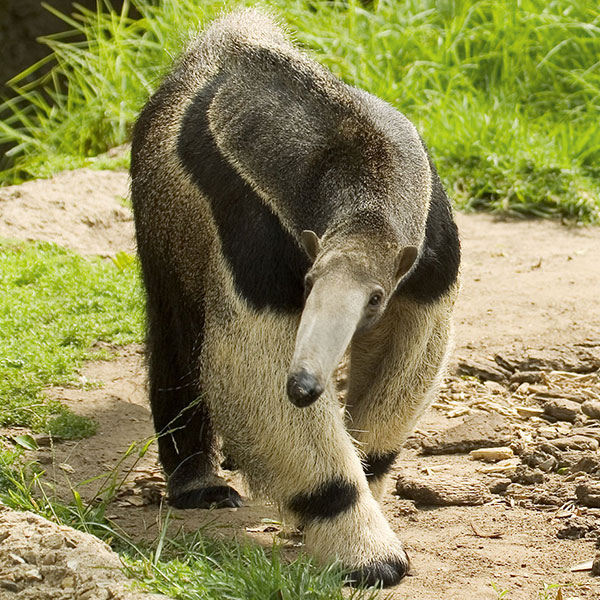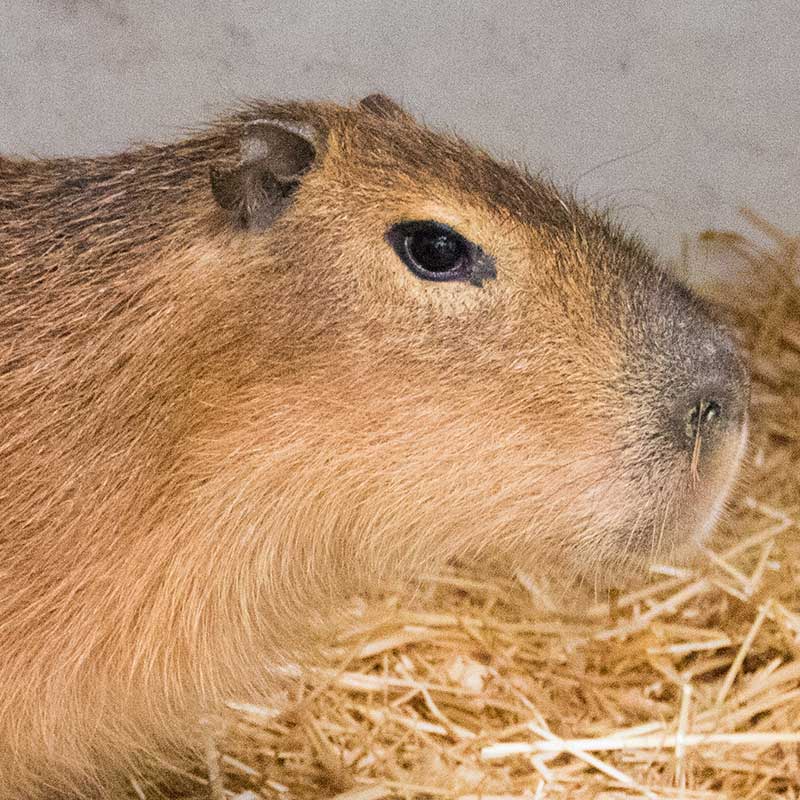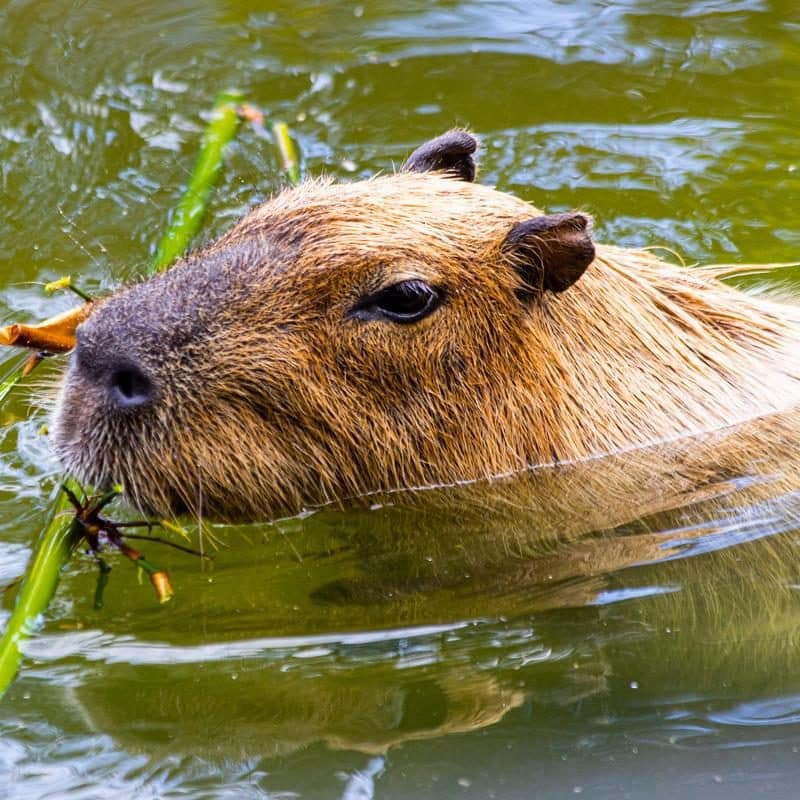
- Born on August 5, 2018 at the Greater Vancouver Zoo
- Was hand-raised as a pup
- Eats nutritional guinea pig “pellets,” alfalfa, spinach, dandelions, and apples and carrots
- Lives in a mixed-species exhibit with giant anteaters (see “A Shared Space” below)
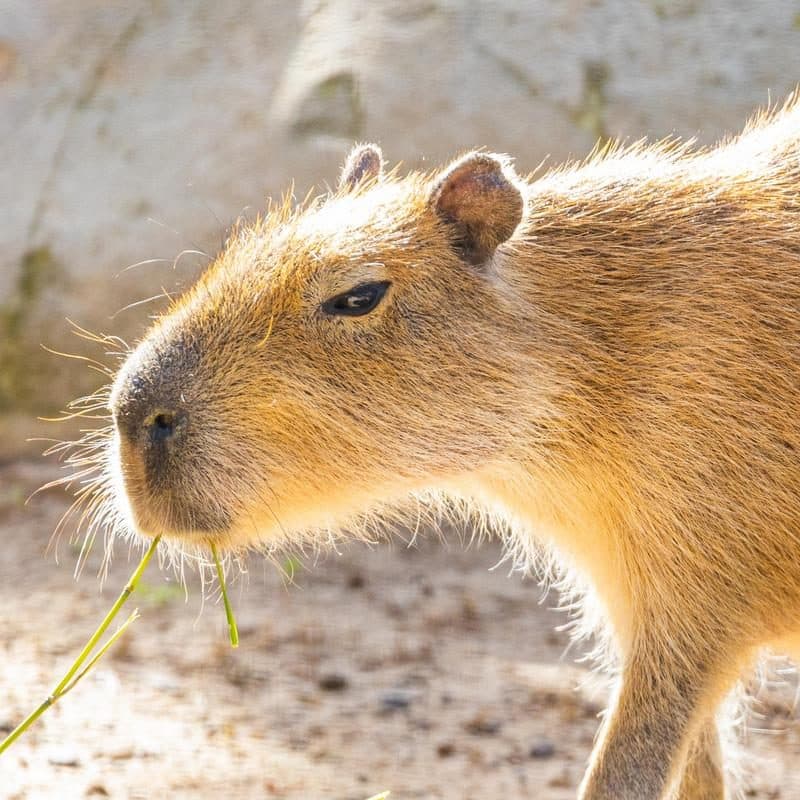
Antonio
- Born on July 26, 2022, at the Montgomery Zoo in Alabama
- Has a big personality and an even bigger appetite!
- Lives in a mixed-species exhibit with giant anteaters (see “A Shared Space” below)
Capybara Characteristics
- Are most active on land, but are skilled and graceful swimmers
- Have partially-webbed feet that allow them to dive deep and swim underwater for long distances
- Often hide in floating vegetation with only their eyes, ears, and nostrils sticking out of the water – much like a hippo
- Like other rodents, their front teeth continuously grow to compensate for being worn down from their diet of grasses and water plants
- Prefer to poop in the water, and rarely “go” on land
- Eat their poop as the bacteria it contains helps in digestion of their fibrous diet of grasses, reeds, and other water plants
Not “Rodents of Unusual Size”
Unlike the fictional “Rodents of Unusual Size” from The Princess Bride movie and book, capybaras are relatively docile, but do sometimes fight amongst themselves. But they can weigh more than 170 pounds. They hail from Central and South America (not the “Fire Swamp”) where they prefer to live near standing water like riversides, ponds, and marshes.
Capybaras have been called “swamp hogs” and “water pigs” as they were originally thought to be related to pigs. But as rodents, they are more closely related to… guinea pigs.
Just as with other rodents like porcupines and squirrels, capybaras’ long front teeth continue to grow throughout their lifetime. However, like a camel, they chew from side-to-side and like a cow, they regurgitate their food to re-chew it.
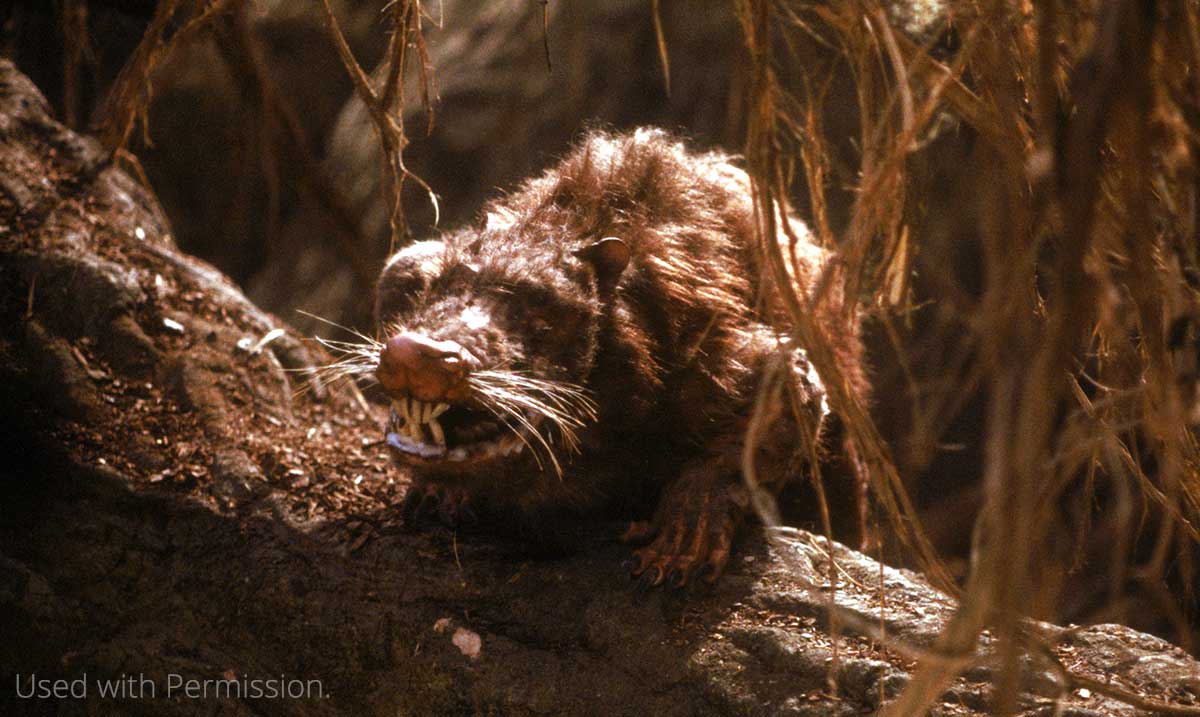
“Rodent of Unusual Size” from The Princess Bride.
Conservation Status
While the IUCN has not officially identified the status of the capybara population, experts generally agree that in recent years it has become increasingly difficult to find this shy and sometimes nocturnal animal in the wild. Deforestation and habitat destruction are factors, and until recently hunting and poaching as a food source. New captive farming programs have helped relieve poaching.

What You Can Do:
Clean water is very important to the survival of all species, including capybaras. You can help prevent pollution in lakes, rivers, and oceans by making sure to properly dispose of chemicals and pet waste.


